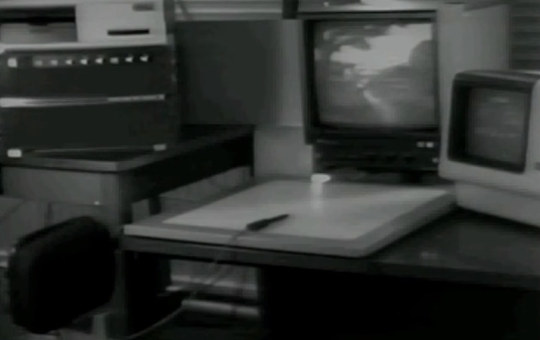#dpbs composition
Explore tagged Tumblr posts
Text
D-PBS And Its Role In Cell-Cell Interactions
Dulbecco’s Phosphate Buffered Saline (D-PBS) is an essential component in cell culture and research laboratories across the globe. To the casual observer, this may seem like simply a rinsing solution, but it maintains physiological conditions and facilitates important cell-cell interactions.

Understanding D-PBS Composition
D-PBS composition has a very balanced salt solution especially constructed to emulate the physiological environment of mammalian cells. These are the main ingredients:
● Sodium chloride (NaCl): Osmotic balance, essential ions.
● Potassium chloride (KCl): Proper ion concentrations for cell function.
Sodium phosphate and potassium phosphate: Buffers with stable pH critical for optimal cell growth and activity.
Absence of Calcium and Magnesium
The important difference between D-PBS and standard PBS is the absence of calcium and magnesium ions. They are vital for many cellular processes, but they hamper certain experimental procedures:
● Cell dissociation: Calcium and magnesium ions encourage cell-cell adhesion. This is one factor that makes efficient dissociation of cells from culture surfaces or tissues problematic.
● Immunological studies: These ions may interfere with antibody binding, affecting the validity of immunostaining and flow cytometry experiments.
D-PBS and Cell-Cell Interactions
There are several ways in which D-PBS directly affects cell-cell interactions:
● Washing away growth factors and cytokines: These extracellular signaling molecules are known to influence different aspects of cell behavior-including proliferation, differentiation, and migration-when washed out using D-PBS potentially provide the possibility of being more controlled over experimental conditions.
● Cell viability maintenance: A physiologically balanced surrounding created by D-PBS minimizes osmotic stress and protects cell viability during washing and handling.
D-PBS Applications in Cell-Cell Interaction Studies
The crucial role played by D-PBS in all these various experimental settings with respect to cell-cell interactions:
● Co-culture experiments: Preparation of washed cells to be co-cultured with another cell type ensures that residuals do not affect the co-culture.
● Cell migration assays: D-PBS suspension of cells will be prepared and then produced in concentration-defined gradients of chemotactic substances, which will allow cells to migrate through chemotaxis.
● Adhesion studies: D-PBS washes both the cells and substrates before assays in order to prevent any potential altering of attachment of the cells due to residual proteins or factors.
Conclusion
D-PBS regulates cell-cell interactions and, despite its plain and simple composition, offers many aspects in governing cell-cell interactions. Delbecco’s PBS perhaps holds a spectrum in a microscopically changed ionic environment and neutral influence of divalent cations on any cell-based experiment, starting with simple cell culture to the most integrated studies of cell communication and behavior. Visit PurMa Biologics LLC to get more information.
0 notes
Text
Quantel DPB 7001 Paintbox 1981
New Post has been published on https://www.aneddoticamagazine.com/quantel-dpb-7001-paintbox-1981/
Quantel DPB 7001 Paintbox 1981

The Quantel Paintbox is a dedicated computer graphics workstation for composition of broadcast television video and graphics. Produced by the now-defunct British production equipment manufacturer Quantel, its design emphasized the studio workflow efficiency required for live news production. At a price of about $150,000 per unit (equivalent to $369,000 in 2019), they were used primarily by large TV networks such as NBC, while in the UK, Peter Claridge’s company CAL Videographics was the first commercial company to purchase one.
youtube
Following its initial launch in 1981, the Paintbox revolutionised the production of television graphics.
Quantel Paintbox training video, 1994
youtube
#broadcast television video#computer graphics workstation#dedicated computer graphics#for live news production#Quantel DPB 7001 Paintbox#Quantel Paintbox
0 notes
Text
D-PBS: Essential for Cell Washing and Maintenance
Dulbecco's Phosphate-Buffered Saline (D-PBS) is a balanced salt solution used in cell culture for washing cells, tissues, and biological samples. It helps maintain the osmotic balance of cells, ensuring that their internal environment remains stable during experimental procedures. D-PBS is typically used during trypsinization, as a rinsing solution before and after cell harvest, and for removing excess serum. Its composition includes phosphate salts to buffer the pH, ensuring that the cells stay in a stable, physiological environment. It’s an essential component in many laboratory protocols.
For more information visit - https://www.purmabiologics.com/product/dulbeccos-phosphate-buffered-saline-dpbs/

0 notes
Text
Quantel DPB 7001 Paintbox 1981
New Post has been published on https://www.aneddoticamagazine.com/quantel-dpb-7001-paintbox-1981/
Quantel DPB 7001 Paintbox 1981

The Quantel Paintbox is a dedicated computer graphics workstation for composition of broadcast television video and graphics. Produced by the now-defunct British production equipment manufacturer Quantel, its design emphasized the studio workflow efficiency required for live news production. At a price of about $150,000 per unit (equivalent to $369,000 in 2019), they were used primarily by large TV networks such as NBC, while in the UK, Peter Claridge’s company CAL Videographics was the first commercial company to purchase one.
youtube
Following its initial launch in 1981, the Paintbox revolutionised the production of television graphics.
Quantel Paintbox training video, 1994
youtube
#broadcast television video#computer graphics workstation#dedicated computer graphics#for live news production#Quantel DPB 7001 Paintbox#Quantel Paintbox
0 notes
Text
Quantel DPB 7001 Paintbox 1981
New Post has been published on https://www.aneddoticamagazine.com/quantel-dpb-7001-paintbox-1981/
Quantel DPB 7001 Paintbox 1981

The Quantel Paintbox is a dedicated computer graphics workstation for composition of broadcast television video and graphics. Produced by the now-defunct British production equipment manufacturer Quantel, its design emphasized the studio workflow efficiency required for live news production. At a price of about $150,000 per unit (equivalent to $369,000 in 2019), they were used primarily by large TV networks such as NBC, while in the UK, Peter Claridge’s company CAL Videographics was the first commercial company to purchase one.
youtube
Following its initial launch in 1981, the Paintbox revolutionised the production of television graphics.
Quantel Paintbox training video, 1994
youtube
#broadcast television video#computer graphics workstation#dedicated computer graphics#for live news production#Quantel DPB 7001 Paintbox#Quantel Paintbox
0 notes